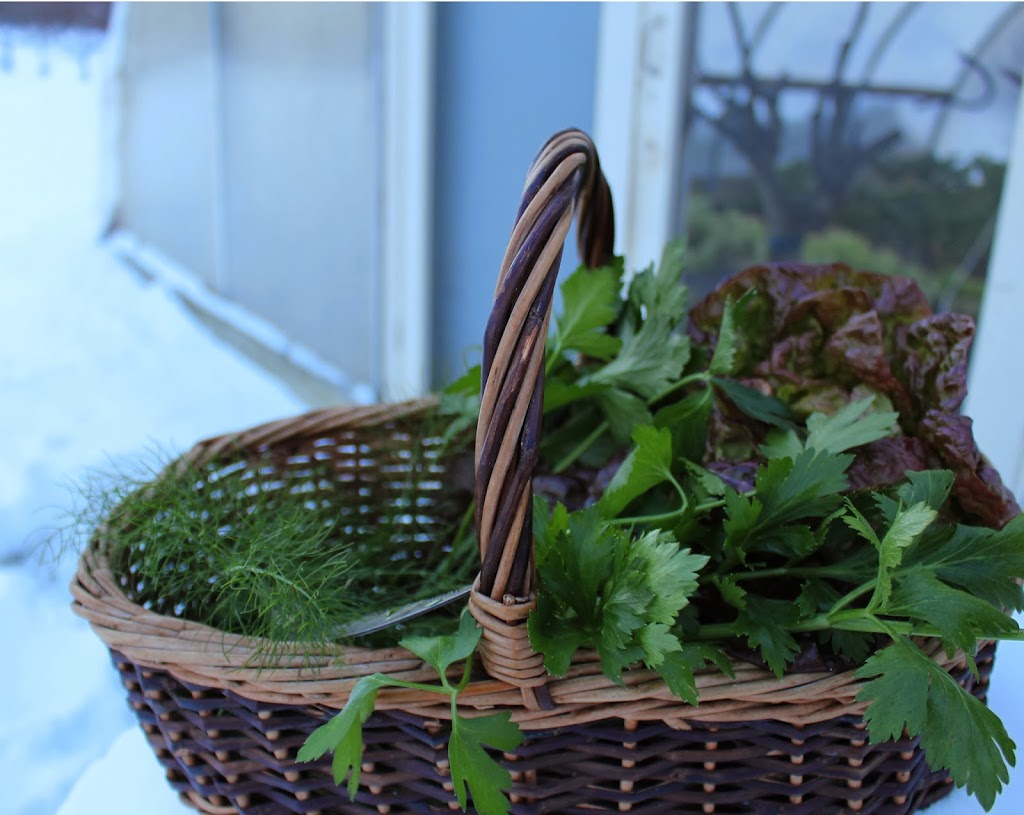One of my favorite things about our planet is that the darkest and the coldest days don’t coincide. Wouldn’t that be depressing if they did? We cleared the hump for the darkest days back at the end of December but days and nights are, on average, scheduled to still grow colder and colder.
For me, the longer days offset the increasing cold. Only partially, though, because November to March brings the most overcast days here in the northeast. The days, at least, are growing longer and longer by about a minute each day early this month to over two minutes from one day to the next by the end of the month.
It is at the end of this month that we plunge, on average, into our greatest depth of cold. My tack for making the most of cold weather is to enjoy it, by skiing and skating. And by going into my greenhouse. Inside, on sunny days, it’s a steaming, humid tropical retreat even if temperatures are in the ‘teens on the other side of the inflated double walls of plastic.
————————————————————–
I don’t get it, the undue attraction for baby leaves of lettuce, arugula, and other greens for fresh salads. Truman Capote said that the rich are not like you and me; they eat smaller vegetables. Perhaps, deep down, eating tiny vegetables makes us feel rich.
Not me. Right now, I’m thoroughly enjoying mature heads of fully grown Romaine and Buttercrunch lettuce picked fresh within a hour of being put into a salad bowl. The leaves are crunchy, sweet, and, in the case of Buttercrunch, also buttery. That’s the luxury of a home greenhouse, in addition to the virtual trip to the tropics it offers.
Not that getting those heads of lettuce — as well as kale, chard, parsley, celery, mâche, claytonia, and arugula — from the winter greenhouse takes no effort. Planning is perhaps the hardest part. The greenhouse
might be tropical on a sunny day but light inside is the same as outdoors, except less because it needs to go through 2 layers of plastic film. Low light and, to a lesser extent, cool temperatures on nights and overcast days (the heater kicks on at 36°F.) make for little growth in the greenhouse in the dead of winter. My goal, then, is to fill the 400 square feet of space with plants that are just about large enough to harvest by early December.
A home greenhouse does feel luxurious. So as not to be profligate, I eke everything I can from the space. In-ground fig trees there bear abundantly from August to October, then their leaves drop and they get pruned back, so they cast no shade in winter. On the benches I raise all my vegetable and flower seedlings. And melons and cucumbers sometimes trail on the ground beneath the figs all through summer. All this for only $680 per season, averaged over the past 11 years, as well as my labor (of love).
————————————————————–
So how much sunlight does shine within my greenhouse, or into the sunny, south facing windows of my home? Not much this time of year.
Let’s quantify the light. One measure of light is the foot-candle (fc), which is the amount of light cast on a square foot area by a candle at one foot distance. You can get an estimate of this measure using a digital SLR camera. Set it on aperture priority with the aperture at f/8 and the ISO at 100. Hold a white sheet of paper so whatever light you’re measuring falls directly on it and measure the shutter speed reading the camera gives you (without a flash, obviously) for a good picture from about a foot away. Multiply the shutter speed times 4 for the approximate foot-candles.
(Shutter speed is usually expressed as a fraction of a second, so a speed of “500” is really 1/500th of a second; for foot-candles, you’d multiply 500 times 4 for 2,000 foot-candles. If light is very dim, the shutter speed might be more than a second; no need to measure, in this case, because in such light any plant will barely stay alive.)
I recently took a few measurements. Outside, on a slightly overcast day, I measured 2,000 fc. Measurements were 1,000 fc righ right at a south-facing window and in the greenhouse, and 500 fc four feet back from the window. Light at a north facing window measured 100 fc, and beneath a 27 watt fluorescent table lamp, 60 fc.
A bright summer day bathes our beautiful planet with 10,000 fc of sunlight. No wonder plants indoors and out are just biding their time. Not to mention the cold.


